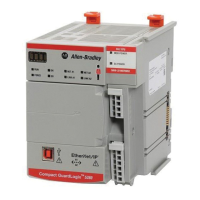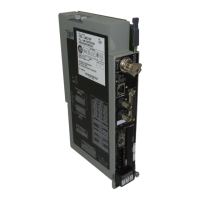Publication 1756-UM001G-EN-P - January 2007
Manage Controller Communication 49
Send and Receive
Messages
Messages transfer data to other devices, such as other controllers or
operator interfaces. Some messages use unscheduled connections to
send or receive data. These connected messages can leave the
connection open (cache) or close the connection when the message is
done transmitting. Each message uses one connection, regardless of
how many devices are in the message path. To conserve connections,
configure one message to read from or write to multiple devices.
Message Types
Each message uses one connection, regardless of how many devices
are in the message path. You can programmatically change the target
of a MSG instruction to optimize message transfer time.
Determine Whether to Cache Message Connections
When you configure a MSG instruction, you can choose whether or
not to cache the connection.
Caching Message Connections
Message Type Communication
Method
Connected
Message
Message Can
Be Cached
CIP data table read or write N/A Yes Yes
PLC-2, PLC-3, PLC-5, or SLC
(all types)
CIP No No
CIP with Source ID No No
DH+ Yes Yes
CIP generic N/A
Optional
(1)
(1)
You can connect CIP generic messages. However, for most applications we recommend you leave CIP generic
messages unconnected.
Yes
(2)
(2)
Consider caching only if the target module requires a connection.
Block-transfer read or write N/A Yes Yes
Message
Execution
Function
Repeatedly Cache the connection.
This keeps the connection open and optimizes execution time. Opening
a connection each time the message executes increases execution
time.
Infrequently Do not cache the connection.
This closes the connection upon completion of the message, which
frees up that connection for other uses.

